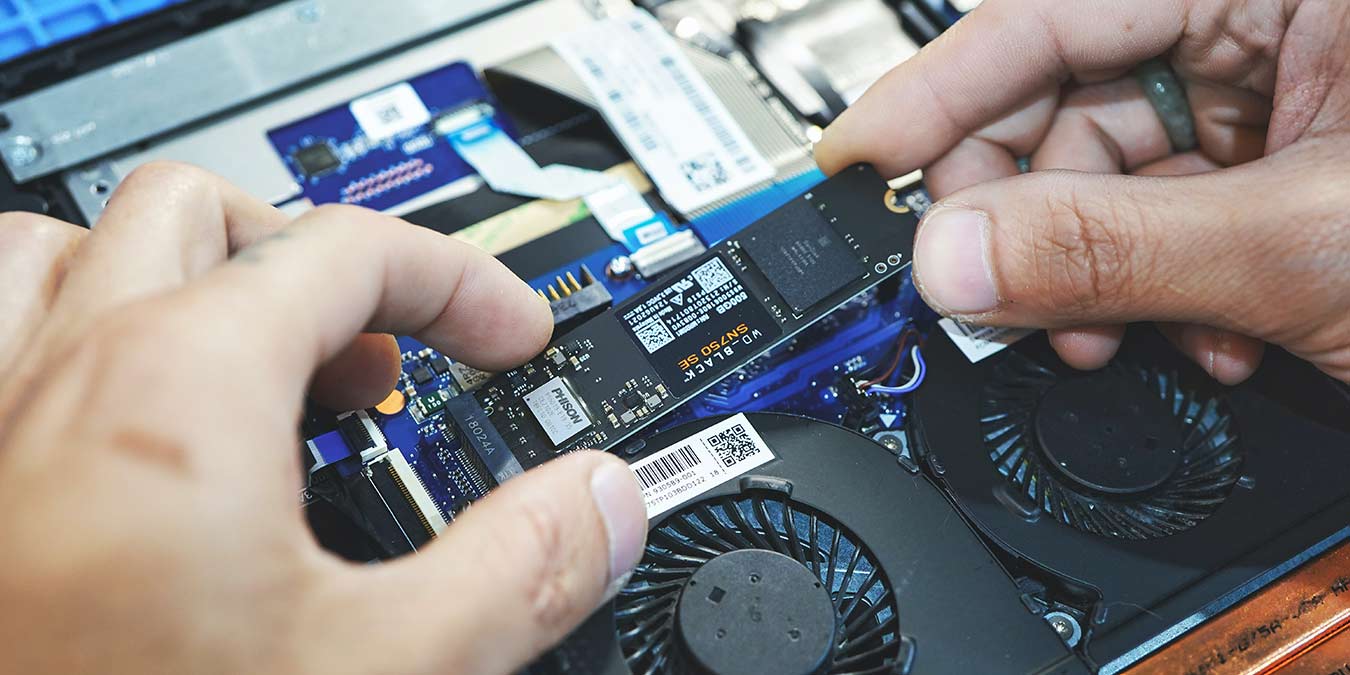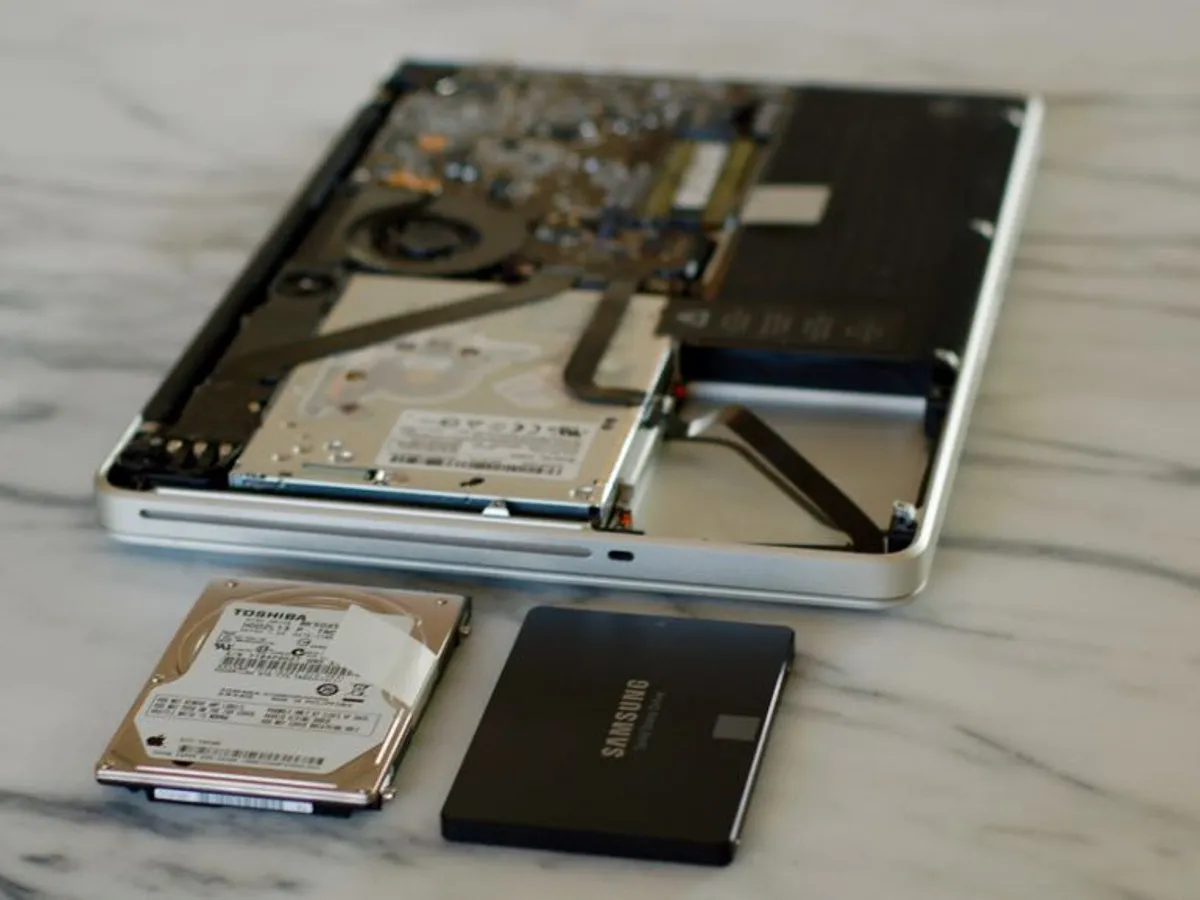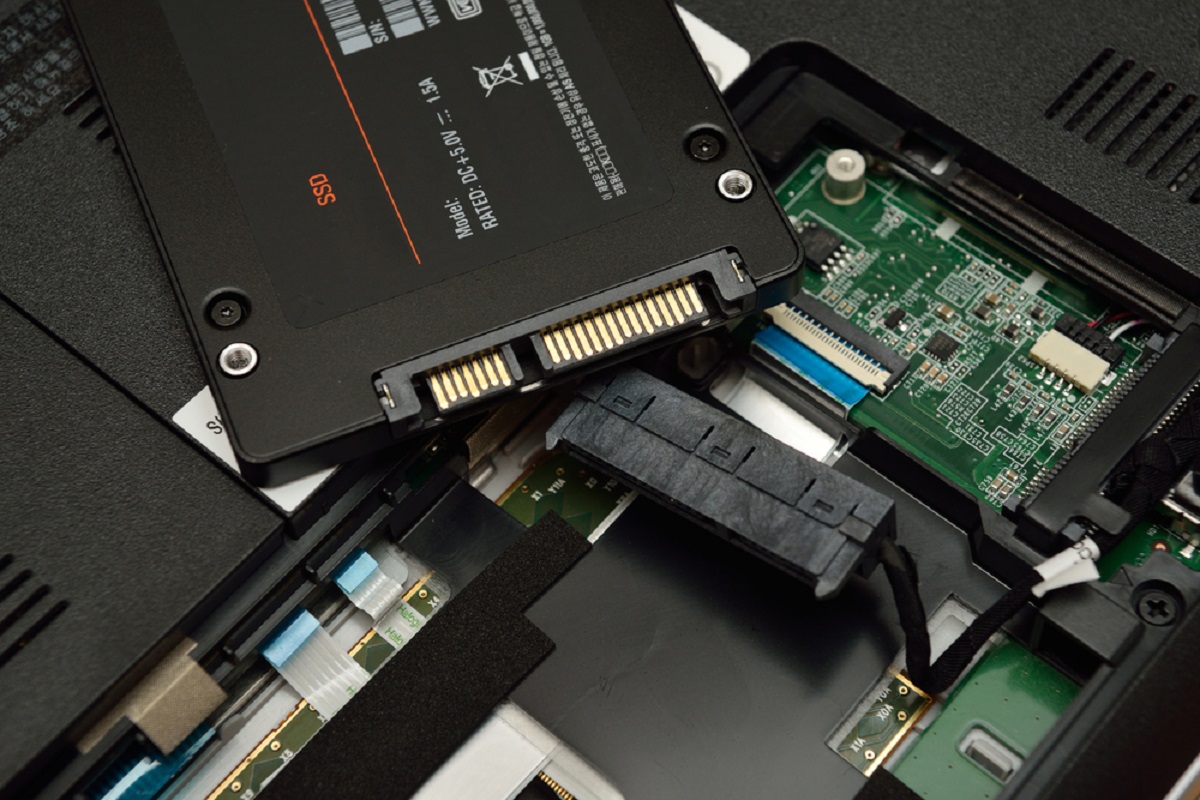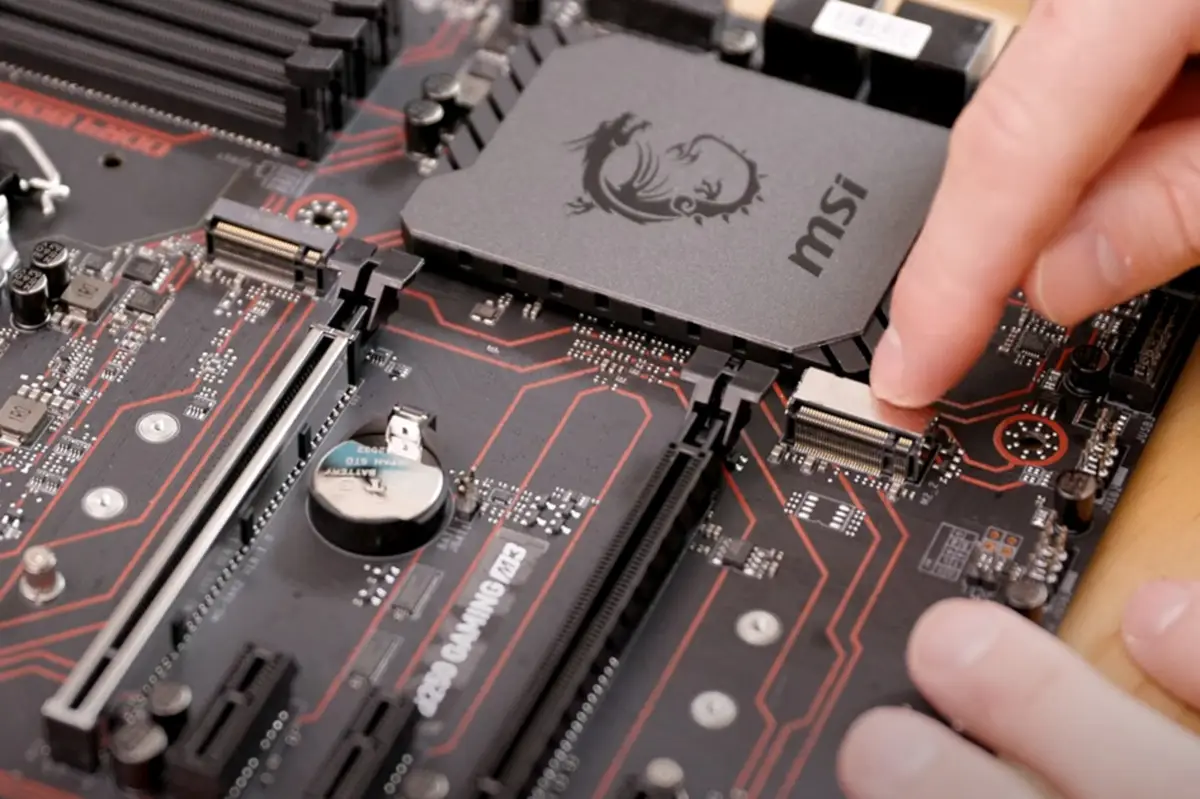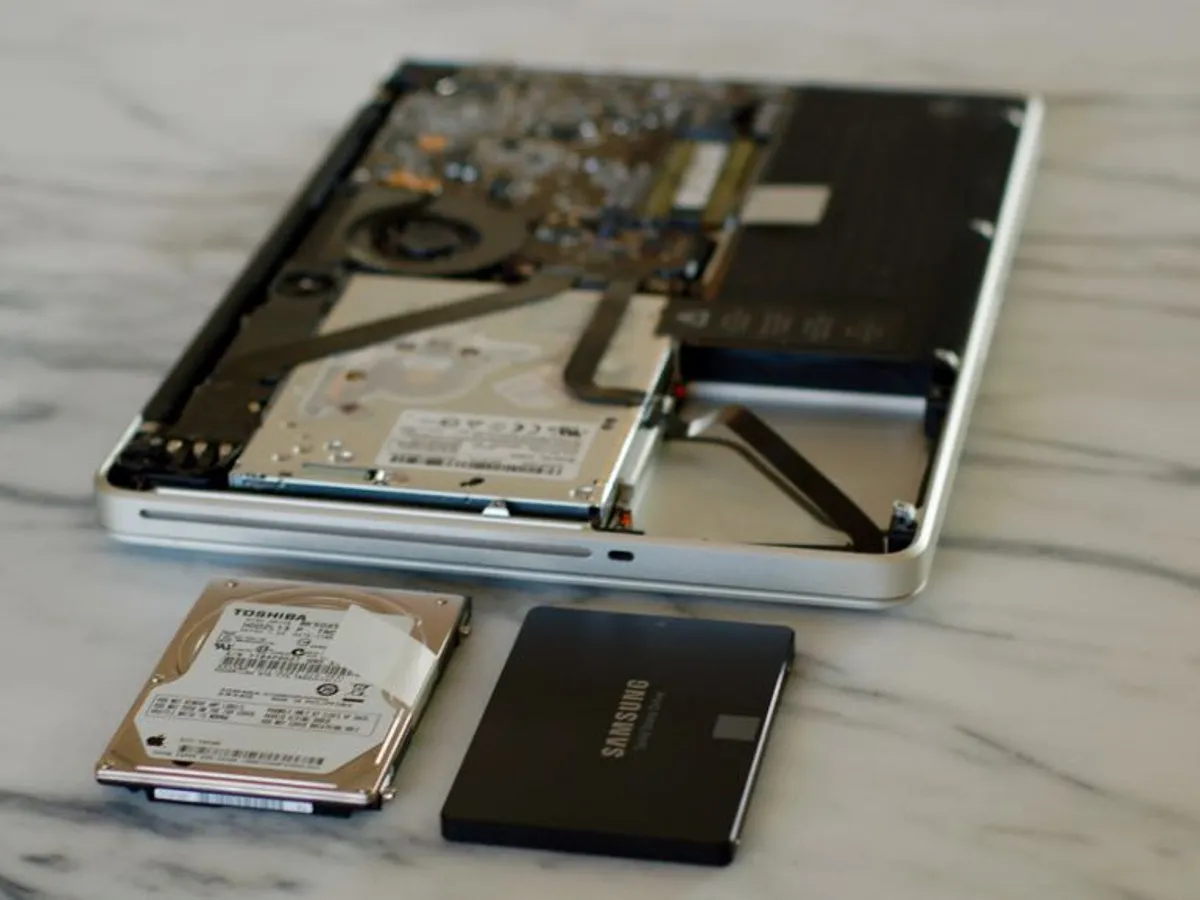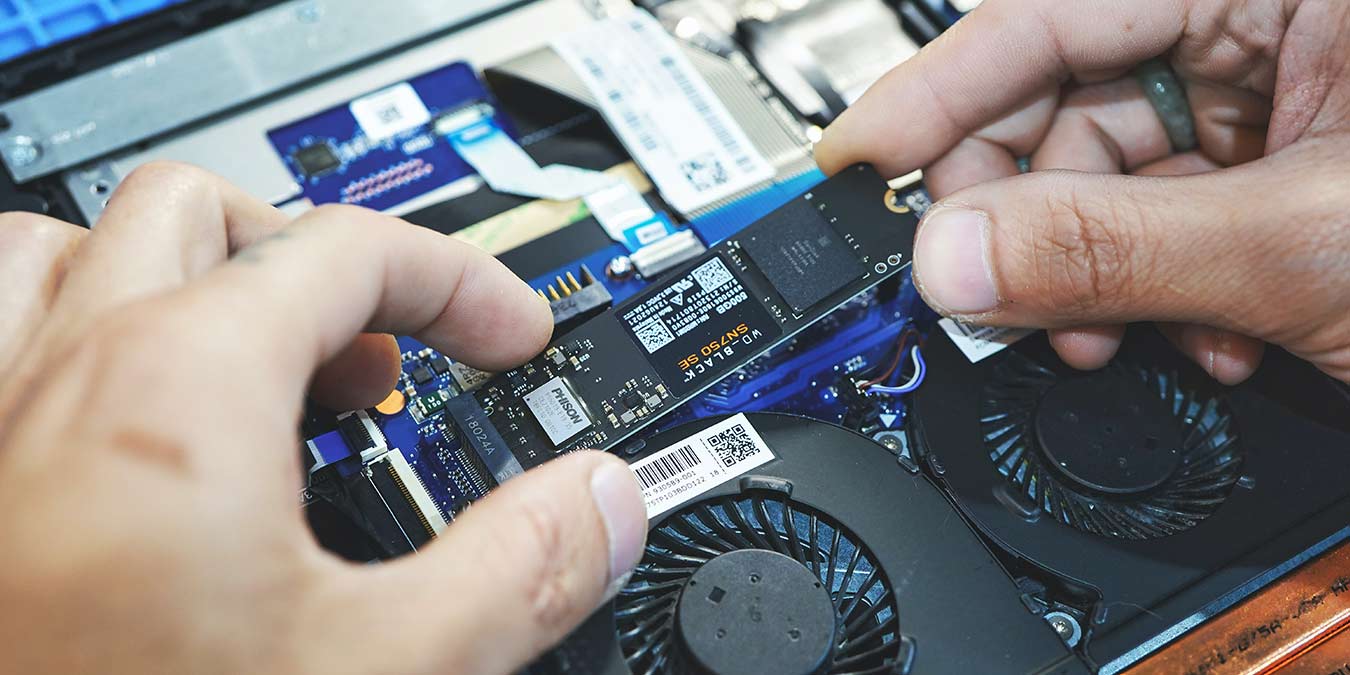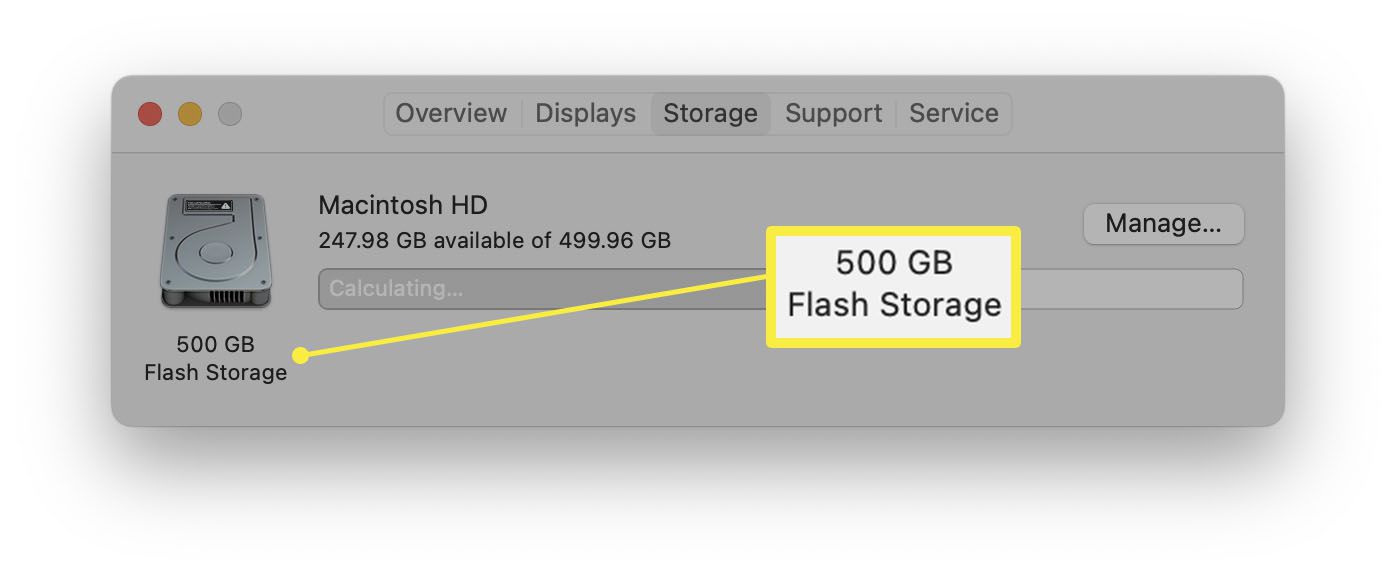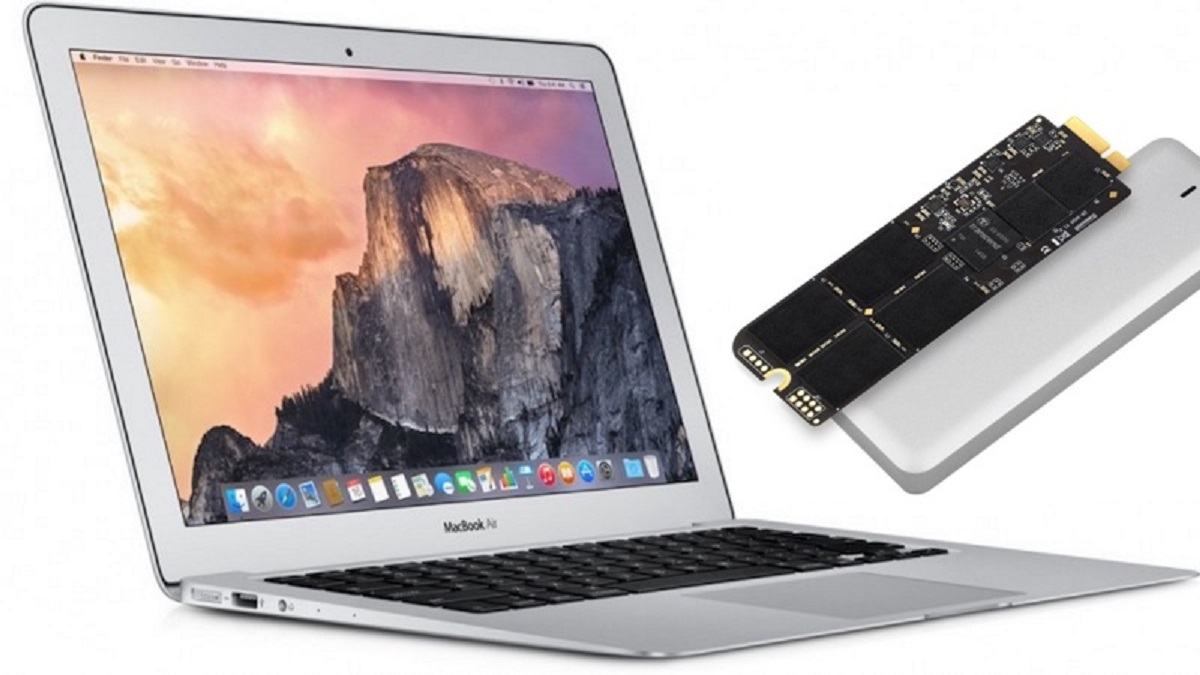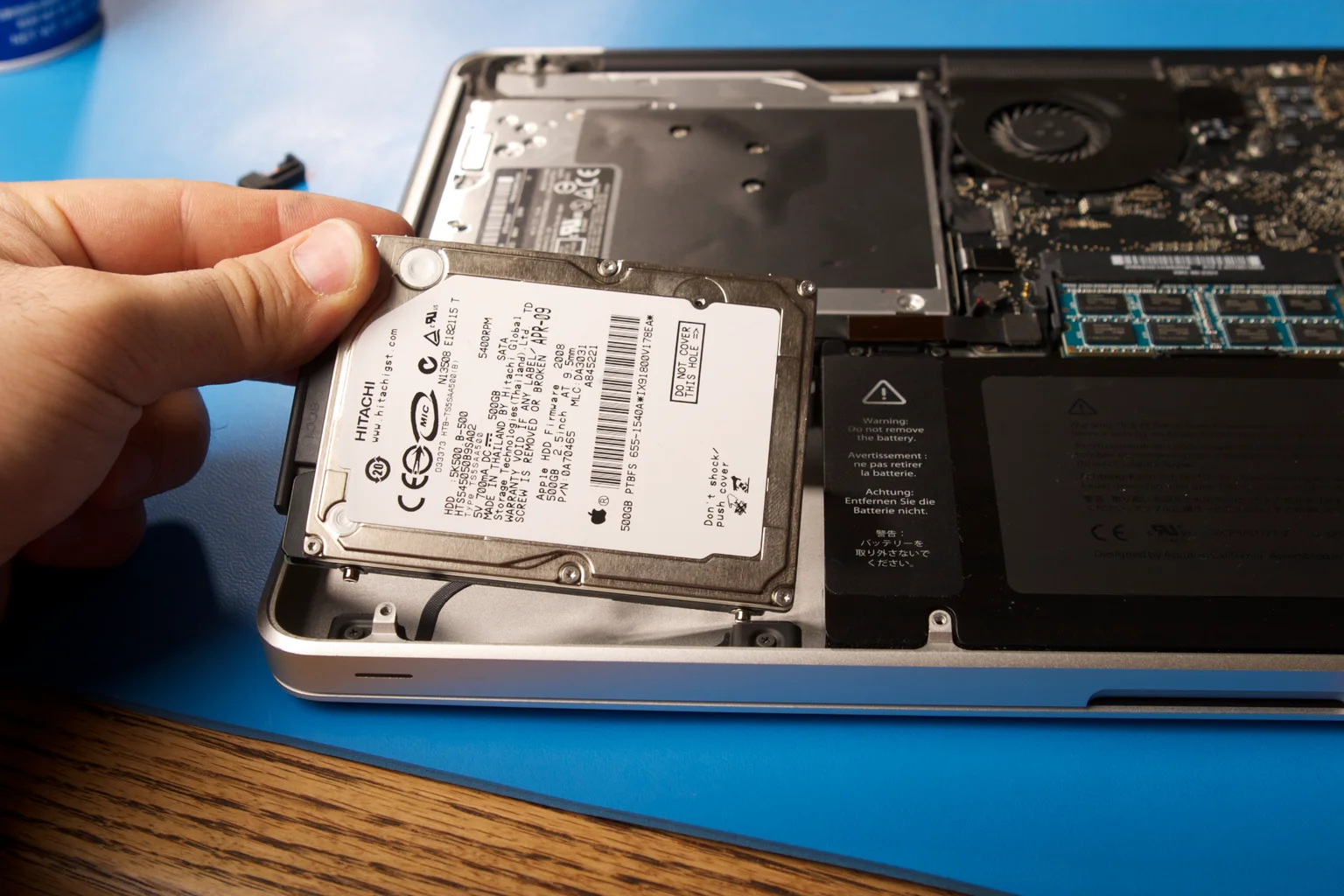Introduction
If you’re a Mac user, you may be wondering whether your computer is equipped with a Solid State Drive (SSD) or a Hard Disk Drive (HDD). Knowing the type of storage drive in your Mac can help you understand its performance capabilities and determine if it’s time for an upgrade. While both SSDs and HDDs serve the same purpose of storing data, SSDs generally offer faster read and write speeds, improved durability, and lower power consumption compared to HDDs.
In this article, we will explore various methods to determine if your Mac has an SSD. We will cover both built-in tools provided by Apple and third-party applications that can provide detailed information regarding your storage device. By the end of this article, you will have a clear understanding of whether your Mac is equipped with an SSD or an HDD.
Before we dive into the different methods, it’s worth mentioning that the presence of an SSD doesn’t necessarily mean your Mac will perform flawlessly. Other factors, such as the processor speed, amount of RAM, and overall system health, can also affect performance. However, identifying the type of storage drive is a crucial first step in understanding the capabilities of your Mac.
Now, let’s explore the methods available to determine if your Mac has an SSD. We will start with built-in tools provided by Apple, and then move on to third-party applications and Terminal commands for more advanced users. So, let’s get started!
Checking System Information
One of the easiest ways to determine if your Mac has a Solid State Drive (SSD) is by checking your system information. Apple provides a built-in tool called “System Information” that gives you a detailed overview of your Mac’s hardware specifications. Here’s how you can access it:
1. Click on the Apple menu icon in the top-left corner of your screen.
2. Select “About This Mac” from the drop-down menu.
3. A window will pop up displaying an overview of your Mac. Click on the “System Report” button.
In the System Information window, navigate to the “Hardware” section on the left panel. Look for “Storage” or “ATA” in the list of hardware components. Clicking on it will provide detailed information about your storage device.
In the “Medium Type” or “Media” section, you will find the type of storage drive installed in your Mac. If it says “Solid State Device” or “Flash Storage,” then your Mac is equipped with an SSD. If it says “Rotational” or “Hard Disk,” then your Mac has a traditional HDD.
While checking the system information is a quick and convenient method, it may not always provide specific details about the model or speed of the SSD. If you need more detailed information, consider using other methods we will discuss later.
If you find that your Mac has an SSD, congratulations! You can expect faster boot times, quicker application launches, and improved overall performance. However, if you discover that your Mac still relies on an HDD, you may want to consider upgrading to an SSD to enhance your Mac’s performance and responsiveness.
Checking Storage in About This Mac
Another method to determine if your Mac has a Solid State Drive (SSD) is by checking the storage information in the “About This Mac” section. Here’s how you can do it:
1. Click on the Apple menu icon in the top-left corner of your screen.
2. Select “About This Mac” from the drop-down menu.
3. In the window that appears, click on the “Storage” tab.
In this tab, you will see a visual representation of your storage devices, along with details about the available space. Look for the “Storage Overview” section, and you will find a breakdown of your storage drives.
If your Mac has an SSD, it will be labeled as “Flash Storage” or “SSD” in the description. It will also indicate the capacity of the SSD and the amount of free space available.
On the other hand, if your Mac has a traditional Hard Disk Drive (HDD), it will be labeled as “Hard Disk” or “HDD” in the description.
By checking the storage information in the “About This Mac” section, you can quickly determine the type of storage drive used in your Mac. If you see “Flash Storage” or “SSD,” it means your Mac is equipped with an SSD, which offers faster performance and increased reliability.
However, if you find that your Mac has a traditional HDD, you may want to consider upgrading to an SSD to enjoy the benefits of improved speed and durability. Upgrading to an SSD can significantly enhance your Mac’s overall performance and responsiveness, making it a worthwhile investment.
Keep in mind that checking the storage in “About This Mac” provides a basic overview and may not provide all the detailed information about your SSD model or speed. For more in-depth information, continue reading to explore other methods, such as using Disk Utility or Terminal commands.
Checking Storage in Disk Utility
Disk Utility is a powerful built-in tool on macOS that allows you to manage and diagnose your storage devices. You can also use Disk Utility to determine if your Mac has a Solid State Drive (SSD). Here’s how you can check it:
1. Go to the Applications folder and open the Utilities folder.
2. Locate and open Disk Utility.
Once Disk Utility is open, you will see a list of drives and volumes on the left-hand side. These include both internal and external storage devices connected to your Mac.
Look for your main drive, which is typically called “Macintosh HD” or “Macintosh SSD.” Select it from the list.
On the right-hand side, you will see all the information related to your selected drive. Look for the “Media Name” or “Medium Type” section. If it mentions “Solid State Device” or “Solid State SATA Device,” then your Mac is equipped with an SSD.
If the “Media Name” or “Medium Type” section says “Rotational,” “Hard Disk,” or “HD,” then your Mac has a traditional Hard Disk Drive (HDD).
By using Disk Utility, you can get more detailed information about your storage drive and confirm whether it’s an SSD or an HDD. Keep in mind that Disk Utility is primarily used for managing and formatting drives, so it provides a reliable source of information about your storage device.
If you find that your Mac has an SSD, rejoice! You can enjoy faster data access, improved boot times, and overall better performance. If you still have an HDD, you might consider upgrading to an SSD to maximize your Mac’s speed and responsiveness.
Now that you’ve learned how to check storage information in Disk Utility, let’s move on to the next section, where we will discuss identifying Solid State Drive (SSD) characteristics using additional methods.
Identifying Solid State Drive (SSD) Characteristics
When determining if your Mac has a Solid State Drive (SSD), it can be helpful to identify certain characteristics of an SSD. These characteristics can provide more specific details about the type and performance of your storage drive. Here are some methods to identify SSD characteristics:
1. Drive Capacity: SSDs typically come in smaller capacities compared to traditional HDDs. If your Mac has a storage capacity of 256GB or lower, it’s likely equipped with an SSD. However, this is not always the case, as larger capacity SSDs are also available.
2. Speed: SSDs offer faster read and write speeds compared to HDDs. If you notice snappy performance, quick file transfers, and faster boot times, it’s a good indication that you have an SSD.
3. Noise: SSDs are silent because they have no moving parts, unlike HDDs, which consist of spinning platters and mechanical components. If your Mac operates silently without any audible clicking or whirring noises during disk activity, it’s likely using an SSD.
4. Shock Resistance: SSDs are more resistant to physical shocks and vibrations due to their lack of moving parts. If your Mac has survived accidental drops or impacts without any significant impact on performance or data integrity, it’s a strong indication of an SSD.
5. Power Efficiency: SSDs consume less power compared to HDDs, which can result in better battery life on laptops. If you enjoy extended battery life or notice lower power consumption on your Mac, it’s likely due to the presence of an SSD.
By considering these characteristics, you can make an educated guess about the type of storage drive in your Mac. However, for more accurate information, it’s best to rely on the methods we discussed earlier, such as checking system information, using Disk Utility, or other advanced techniques.
Identifying SSD characteristics can help you understand the benefits and limitations of your storage drive. If you confirm that your Mac has an SSD, you can take full advantage of its fast performance, durability, and power efficiency. And if you’re still using an HDD, it might be worth considering an upgrade to enjoy the benefits offered by an SSD.
In the next section, we will explore how to use Terminal commands to check storage information and identify whether your Mac has an SSD or an HDD.
Using Terminal to Check Storage
For advanced users, one of the most powerful methods to check storage information and determine if your Mac has a Solid State Drive (SSD) is by using Terminal commands. Terminal allows you to interact with the macOS command-line interface. Here’s how you can check storage using Terminal:
1. Open the Terminal application. You can find it in the Utilities folder within the Applications folder, or you can use Spotlight to search for it.
2. Once Terminal is open, type the following command and press Enter:
diskutil info disk0 | grep "Solid State"
This command retrieves detailed information about your main disk (usually labeled as “disk0”) and searches for the presence of “Solid State”.
If the Terminal displays a message containing “Solid State,” it means your Mac is equipped with an SSD. If there is no output or if it shows “Rotational,” it indicates a traditional Hard Disk Drive (HDD).
Additionally, you can also use the “system_profiler” command followed by “| grep -iE “device_type”” to get similar information.
Using Terminal commands provides you with a more technical and detailed view of your storage device. It allows you to confirm whether your Mac has an SSD or an HDD, making it particularly useful for advanced users and troubleshooting.
Keep in mind that Terminal commands should be used with caution, as they can directly access and modify system files. If you’re not comfortable using Terminal or unsure about the commands, it’s recommended to use the other methods discussed earlier in this article.
Now that you’re familiar with using Terminal to check storage information, let’s explore the next section, where we will discuss third-party applications that provide detailed information about your storage device.
Using Third-Party Applications
If you prefer a more user-friendly and comprehensive approach to check storage information and determine if your Mac has a Solid State Drive (SSD), you can turn to third-party applications. These applications offer detailed insights into your storage device’s characteristics and performance. Here are a few popular options:
1. Blackmagic Disk Speed Test: This application is primarily used to measure the speed of your storage device. It provides detailed information about read and write speeds, which can help differentiate between SSDs and HDDs. Higher speeds indicate the presence of an SSD.
2. DriveDx: DriveDx is a powerful diagnostic tool that monitors the health and performance of your storage device. It provides information about the type of drive (SSD or HDD), temperature, error rate, and other critical metrics. It also offers predictive failure analysis, helping you identify potential issues before they become severe.
3. iStat Menus: iStat Menus is a system monitoring application that provides real-time information about various aspects of your Mac’s hardware. It offers detailed storage information, including the type of drive and usage statistics. This can help you identify if your Mac has an SSD or an HDD.
4. Smart Utility: Smart Utility is an application that focuses on the health and reliability of your storage device. It provides an overview of your drive’s SMART (Self-Monitoring, Analysis, and Reporting Technology) data, which can include insights into the type of drive and its performance characteristics.
These third-party applications offer comprehensive information about your storage device, making it easier to identify if you have an SSD or an HDD. They often provide additional features and functionality beyond storage information, making them useful tools for maintaining and optimizing your Mac’s performance.
When using third-party applications, it’s important to choose reputable and well-reviewed options from trusted sources. Take note of any system requirements, compatibility, and pricing considerations before making your selection.
Now that we’ve explored various methods, including using built-in tools and third-party applications, you should have a clearer understanding of how to determine if your Mac has an SSD. Regardless of the method you choose, identifying the type of storage drive is an essential step in optimizing your Mac’s performance.
In the next section, we will summarize the key points discussed so far and conclude our article.
Conclusion
Determining whether your Mac has a Solid State Drive (SSD) is essential for understanding its capabilities and potential for performance improvements. Throughout this article, we have explored various methods to check storage information and identify if your Mac is equipped with an SSD or a traditional Hard Disk Drive (HDD).
First, we discussed checking system information using built-in tools like “System Information” and “About This Mac.” These methods provide a quick overview of your storage device but may not provide detailed information about the specific SSD model or speed.
We then explored using Disk Utility to check storage information, which offers more advanced details about your storage drives. This tool can provide more specific information about the presence of an SSD or HDD.
In addition, we discussed identifying SSD characteristics such as drive capacity, speed, noise level, shock resistance, and power efficiency. These characteristics can help in determining the type of storage drive in your Mac, but they should be considered as indicators rather than definitive factors.
For more advanced users, we showcased how to use Terminal commands to check storage information. Terminal provides a powerful and detailed view of your storage device, allowing you to confirm whether your Mac has an SSD or an HDD.
Lastly, we explored the option of using third-party applications like Blackmagic Disk Speed Test, DriveDx, iStat Menus, and Smart Utility. These applications offer comprehensive insights into your storage device and can provide in-depth information about the type of drive, performance metrics, and overall health.
In conclusion, identifying whether your Mac has an SSD is crucial for understanding its performance capabilities and considering potential upgrades. By using the methods discussed in this article, you can easily determine if your Mac is equipped with an SSD or an HDD.
No matter the type of storage drive, regularly maintaining your Mac’s health, optimizing its settings, and considering hardware upgrades can help ensure optimal performance. Whether you have an SSD or an HDD, make sure to backup your data regularly, perform software updates, and keep your system clean.
Remember, if you’re unsure or uncomfortable with any of the methods discussed, it’s always a good idea to consult with a professional or reach out to Apple Support for guidance.
We hope this article has helped you in determining the type of storage drive in your Mac and empowered you to make informed decisions regarding its performance and future upgrades.







